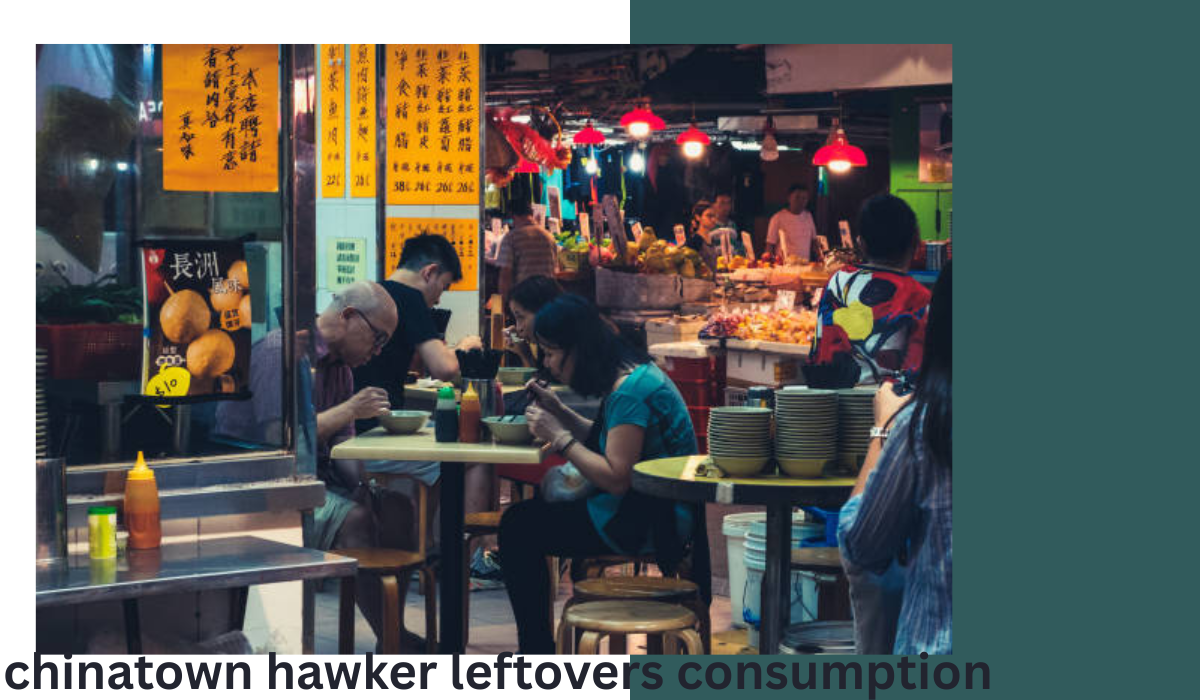🍜 Introduction: Why Chinatown Hawker Leftovers Matter
In the bustling heart of many Asian cities, chinatown hawker leftovers consumption serve as vibrant cultural and culinary hubs. But while these food stalls feed thousands daily, they also generate an often-overlooked byproduct: leftovers. These aren’t just scraps — they’re a window into deeper questions of sustainability, food waste, cultural identity, and social responsibility.
In this article, we explore the growing interest in Chinatown hawker leftovers consumption, unpacking its implications for communities, the environment, and food systems worldwide.
🏮 What Are Hawker Centres?
Hawker centres are open-air food courts, common in places like Singapore, Malaysia, and Hong Kong. These stalls, often family-run, offer affordable, fast, and authentic dishes — from chicken rice to char kway teow.
What sets them apart is their accessibility and cultural value. They serve as:
-
Daily food providers for working-class citizens
-
Tourists’ first taste of local cuisine
-
Platforms for culinary tradition and innovation
📈 The Rise of Leftovers Consumption in Urban Asia
As cities like Singapore and Kuala Lumpur grow more conscious of food waste, leftover consumption has emerged as a grassroots solution. Individuals and organizations are rethinking how to deal with unsold or uneaten food — particularly in busy areas like Chinatown.
This trend has gained traction due to:
-
Growing environmental concerns
-
Urban food insecurity
-
Increasing awareness of food waste statistics
-
Advocacy by sustainability influencers and NGOs
🥡 The Culture Behind Chinatown Hawker Food
To understand leftover consumption, we must first appreciate the cultural richness of Chinatown hawker cuisine. These dishes are born from generations of migration, adaptation, and local ingenuity.
Popular examples include:
-
Bak kut teh (pork rib soup) – Malaysian-Chinese origins
-
Wanton mee (noodles with dumplings) – Cantonese roots
-
Nasi lemak – A Malay staple adapted by Chinese hawkers
Leftovers, therefore, are not just excess — they are culinary heritage that’s being discarded.
🍽️ What Happens to Leftovers in Hawker Centres?
🗑️ Standard Waste Practices
Traditionally, unsold food is:
-
Thrown away at the end of the day
-
Kept for staff consumption
-
Given to nearby vendors or cleaners
Unfortunately, much of it ends up as organic waste in landfills, contributing to methane emissions.
🧡 Redistribution & Donation Efforts
Some hawkers have joined initiatives like:
-
Food from the Heart (Singapore)
-
The Lost Food Project (Malaysia)
-
OLIO app – connects food donors with those in need
These programs facilitate the safe redistribution of edible leftovers to shelters, food banks, or low-income communities.
⚖️ Is It Safe to Consume Hawker Leftovers?
This is a crucial question. Safety depends on:
-
Storage conditions
-
Reheating procedures
-
Time between preparation and consumption
NGOs and tech platforms often implement strict protocols to ensure that redistributed food meets health standards.
Governments in Singapore and Malaysia have issued guidelines for safe food donation, helping reduce liability concerns.
🏛️ Legal Frameworks and Hygiene Standards
Authorities like Singapore’s NEA (National Environment Agency) regulate hygiene in hawker centres. Regulations cover:
-
Cleanliness ratings for stalls
-
Temperature control during food handling
-
Licensing of food redistribution efforts
While there’s no explicit law banning the consumption of hawker leftovers, many vendors err on the side of caution due to fear of lawsuits or reputation damage.
🤔 Social Stigma and Ethical Considerations
Despite growing awareness, there’s a lingering stigma around consuming leftovers. It’s often associated with:
-
Poverty
-
Desperation
-
Lack of hygiene
But this perception is changing, especially among:
-
Younger, eco-conscious individuals
-
Zero-waste advocates
-
Community-driven organizations
By reframing leftover consumption as smart, sustainable behavior, activists are rewriting the narrative.
🌱 Environmental Impacts of Food Waste
Wasting food also means wasting the water, labor, and resources used to produce it. According to the FAO, food waste accounts for 8-10% of global greenhouse gas emissions.
In hawker centres alone, daily waste includes:
-
Rice, noodles, and soups
-
Perishable items like tofu and greens
-
Cooked meats and sauces
By promoting responsible leftover consumption, communities can:
-
Lower food waste
-
Reduce carbon footprints
-
Build climate-resilient cities
🤝 Community Programs Tackling Food Waste
Several programs are transforming how hawker leftovers are managed:
-
Food Rescue Sengkang – Volunteers collect unsold food for community distribution.
-
Treatsure App – Offers unsold restaurant or buffet food at discounts.
-
Kindness Mart – A pay-it-forward initiative for meals.
These efforts show how local collaboration can bring meaningful change, often bridging gaps between vendors, volunteers, and vulnerable populations.
💡 The Role of Technology in Leftover Management
Modern problems require digital solutions. Several platforms have emerged to handle hawker leftovers more efficiently:
-
OLIO: Peer-to-peer food sharing app
-
Treatsure: Connects users with unsold food deals
-
ResQ Club: Used in Finland, but concept applicable globally
Such platforms use AI and data analytics to track consumption patterns, forecast surplus, and match donations with demand.
👥 Real Stories: Who Consumes These Leftovers?
Surprisingly, it’s not just the underprivileged.
-
Students living on tight budgets
-
Environmental activists looking to reduce waste
-
Low-income families
-
Migrant workers with limited food access
Testimonials from Chinatown community members reflect pride in reducing waste while accessing nutritious food.
“It’s not about charity — it’s about valuing what we have.”
– A volunteer at a Singapore Chinatown food rescue group
🧭 Balancing Tradition and Innovation in Food Sustainability
Chinatown’s hawker culture is steeped in tradition, yet flexible enough to adapt. Innovations like digital food matching, smart inventory tools, and eco-conscious packaging are helping bridge the old with the new.
Sustainability doesn’t have to conflict with heritage — in fact, the two can enhance one another when communities embrace thoughtful change.
❓ Frequently Asked Questions (FAQs)
1. Is it legal to eat hawker leftovers?
Yes, as long as it’s not stolen or misrepresented. Redistribution through approved programs is encouraged.
2. Are there health risks involved?
If not stored or reheated properly, yes. But food rescue groups follow strict hygiene protocols.
3. Why do hawkers throw away unsold food?
Due to safety concerns, lack of storage, or fears of liability. Some also believe customers won’t buy “old” food the next day.
4. How can I get involved in reducing food waste?
Join local food rescue programs, use food-sharing apps, or volunteer with Chinatown NGOs tackling hunger and sustainability.
5. What types of food are typically leftover?
Cooked rice, noodles, soups, stir-fried dishes, and desserts like tau suan (mung bean soup) or red bean buns.
6. How do hawker centres impact overall food sustainability?
Due to their volume and popularity, even small reductions in food waste at hawker centres have a big impact on urban food ecosystems.
🧾 Conclusion
Chinatown hawker leftovers consumption is more than a sustainability trend — it’s a cultural, ethical, and practical movement. As food waste becomes a pressing global issue, exploring ways to redistribute, reuse, and respect leftovers is key to a more just and environmentally friendly food system.
You May Also Like:





